Transparent Everest climbers
It is not only the thin air on Everest that makes climbers pant. Meanwhile, also a race seems to have started to be the most hip in social networks. Number one in this category this spring season – taking in account the media response worldwide – are without question the two Americans Adrian Ballinger and Cory Richards. They document their ascent without bottled oxygen on the Tibetan north side also via Snapchat – the image and video messaging service for smartphones and tablets, in which the messages automatically disappear after a while – and thus make couch potatoes gasp. Under #EverestNoFilter, everyone can follow Ballinger’s and Richard’s ascent via the Northeast Ridge virtually in real time and unfiltered. The two climbers want to reach the 8850-meter-high summit this weekend.
![]() read more
read more
More than 150 summit successes, one death
A solitary summit experience is different. Gyanendra Shrestha from the Nepalese Tourism Ministry told the Kathmandu-based newspaper “The Himalayan Times” that about 150 climbers had reached the 8850-meter-high summit of Mount Everest since the morning. The number would probably increase to more than 200 during the day. After the strong wind had calmed down, many teams set off from South Col on the Nepalese side of the mountain. The numerous summit successes on Everest were overshadowed by a fatality on the neighboring mountain Lhotse.
![]() read more
read more
Beck Weathers: “It made my life more rewarding”
The Everest summit wave is rolling. Dozens, if not hundreds of summit successes are expected these days, on the Nepalese south side of the highest mountain on earth as well as on the Tibetan north side. Do the Everest aspirants still remember Beck Weathers? Possibly. After all, in 2015 the successful Hollywood movie “Everest” told his story. 20 years ago, in spring 1996, Beck also wanted to climb to the top of the world. Due to vision problems the American pathologist had to abandon his summit attempt at about 8,400 meters. Later he was caught in the storm that cost the lives of eight climbers within 24 hours.
It’s a miracle that Weathers survived. Actually, he was already as good as dead. After a night in whiteout his fellow climbers left him lying in the snow supposing he was dead. But Beck regained consciousness and despite severe frostbite he dragged himself to Camp 4. A rescue team brought him down to Camp 2 at 6,400 meters, from where Beck was brought to safety with a spectacular helicopter flight. Weathers’ right arm had to be amputated just below the elbow. Beck also lost all fingers of the left hand. His frostbitten nose had to be reconstructed in numerous operations.
I have contacted Beck Weathers on the occasion of the 20th anniversary of the 1996 Everest disaster. Because the 69-year-old was traveling, he has sent me his answers to my questions only a few days after the anniversary.
Beck, the 1996 Everest disaster was probably one of your most profound experiences. In what way has it changed your life?
![]() read more
read more
Cool completes his Everest dozen
Also the first foreign climbers have now reached the summit of Mount Everest. After on Thursday – as reported – nine Sherpas had prepared the way to the highest point on 8.850 meters with fixed ropes, on Friday the two Britons Kenton Cool (aged 42) and Robert Lucas (53) reached the summit, accompanied by the Sherpas Dorchi Gyalzen and Pemba Bhote. Cool stood on the “Roof of the world” for the twelfth time. A few minutes after the British climbers, the Mexican David Liano Gonzalez (36) enjoyed his sixth Everest summit success, also led by a Sherpa: Pasang Rita.
![]() read more
read more
First Everest summit successes from Nepali side since 2013
The workers were the first. Today nine Sherpas reached the summit of Mount Everest, as first climbers this spring, said Ang Tshering Sherpa, President of the Nepal Mountaineering Association (NMA). The Sherpas belonged to a team including members of several expedition operators, which fixed ropes up to the highest point at 8,850 meters. It was the first summit success on the Nepalese side of Everest since 2013.
![]() read more
read more
Rescue on Mount Everest
Everest hard way. So the two Slovakian climbers Zoltan Pál and Vladimir Štrba had named their expedition on the south side of the highest mountain on earth. They wanted to reach the 8850-meter-high summit via the difficult route through the Southwest Face, which had been opened by Doug Scott and Dougal Haston in 1975. In contrast to the legendary British climbers, the two Slovaks planned to climb the route in the wall if possible in Alpine style: without Sherpa support, fixed ropes, high camps and also without bottled oxygen. Now they have run into difficulties in the wall.
![]() read more
read more
Dujmovits: “Go to the north side of Everest!”
The good weather window on Mount Everest has not yet opened. “Heavy snow in Everest Base Camp at the moment,” American Dan Mazur, expedition leader of the operator Summit Climb, today wrote on Twitter from the Nepalese south side of the mountain. “Our Sherpas are working high up on the mountain, carrying oxygen, ropes, tents, food.” On the north side of Everest, the Americans Adrian Ballinger and Cory Richards climbed today to an altitude of about 7,600 meters. “For just today, I’m pretty sure Cory and I were the highest people on the planet”, Adrian wrote on Instagram. “Does it matter? Of course not. But it felt special.” The two climbers, who want to scale Everest without bottled oxygen, returned to the North Col, “as afternoon clouds try to cross the border from Nepal into Tibet”. The weathermen expect for the next few days more snowfall on Everest. Maybe one or the other climbers in the base camps on the north and south side will use the time to read again Jon Krakauer’s book “Into Thin Air”. It describes the disaster on Everest in spring 1996. The 20th anniversary will be next Tuesday .
I have talked to Ralf Dujmovits about Mount Everest then and now. The 54-year-old is the first and so far only German who stood on the summits of all 14 eight-thousanders.
Ralf, you have taken an Everest sabbatical this year. Did you – like many others – want to see how the whole situation on Everest is developing?
![]() read more
read more
Normal, and that’s good
Bad news is good news, learns every prospective journalist. But actually it also can be good news, if there is no bad one. This spring, this applies particularly to Mount Everest, after the disasters of the past two years. In spring 2014, the season on the Nepalese side ended prematurely, after an ice avalanche in the Khumbu Icefall had killed 16 Nepali climbers. 2015 even turned out to be a year without summit success on both sides of the mountain due to the devastating earthquake in Nepal. On the south side, 19 people lost their lives, when the quake triggered an avalanche that hit the Base Camp. Later all climbers departed. On the north side, the Chinese authorities closed all eight-thousanders after the earthquake in the neighboring country. This year, in my view, the Everest season is running so far largely normal.
![]() read more
read more
Minute of silence in Everest Base Camp
At 11:56 a.m. all hell broke loose. Exactly a year ago today, a magnitude 7,8 earthquake struck Nepal. About 9,000 people were killed, 23,000 were injured. However, these were only the victims registered by the government, it was probably more. Also on Mount Everest many people died on 25 April 2015. The quake triggered a huge avalanche on the nearby seven-thousander Pumori. It hit Everest Base Camp, 19 people lost their lives. On this anniversary of the disaster, climbers and the staff of the infirmary “Everest ER” gathered at the foot of the highest mountain on earth for a minute of silence – at 11:56 a.m.
![]() read more
read more
Helicopter transport flights to Everest high camps
Time does not stand still, even in Khumbu. Two things have changed dramatically in the region around Mount Everest between my first visit in 2002 and my second last March. Firstly, the sanitary facilities – on average – have become much more modern and cleaner than 14 years ago. Secondly, the aircraft noise has increased significantly. On a clear day, helicopters are flying – as I felt, steadily – through the valley from Lukla to Namche Bazaar and also further up towards Everest Base Camp.
![]() read more
read more
Victory for common sense
For once, I must compliment the Chinese. The country’s authorities refused Tyler Armstrong the permit for climbing Mount Everest. As reported, the now 12-year-old American wanted to climb the highest mountain in the world from the Tibetan north side this spring. Tyler and his parents had hoped to get a “special permit” – as already in 2012 for the ascent of Kilimanjaro (5895 m, highest mountain in Africa) and in 2013 for Aconcagua (6962 m, highest peak in South America). But this time the Chinese stood firm. From my point of view, it’s a victory for common sense. Everest is no place for children, no matter how fit they are.
![]() read more
read more
Ten popular Everest errors
The Everest spring season is gaining momentum. The Base Camp on the Nepalese side of Mount Everest is filling. According to the government in Kathmandu, 279 climbers from 38 countries have registered for the highest mountain on earth. The Icefall Doctors have meanwhile prepared the route all the way up to Camp 2 at 6,400 meters. The teams who want to climb Everest from the Tibetan north side, have also received now their permits from the Chinese authorities and are heading to Tibet. It’s going to kick off there too. Before the media Everest season begins, I would like to correct some reoccurring errors.
![]() read more
read more
Miss Hawley: “I’m just a chronicler”
When I saw the Beetle, I knew I was right. I knew the street, but had no house number, only a rough description of where Miss Hawley is living in Kathmandu. But there it stood in the courtyard: the light blue VW Beetle, built in 1963. “The car is right, of course. Those Beetles are just incredible durable,” says the legendary chronicler of Himalayan mountaineering. For decades, the US-American has driven with the light blue car in front of the hotels in Kathmandu to interview climbers about their expeditions in the Himalayas. However, the 92-year-old is no longer driving her Beetle by herself, she has a driver. “I can’t drive a car with a walker”, says Elizabeth Hawley and grins. Since she broke her hip, she is not quite as mobile as before.
![]() read more
read more
Securing Everest jobs of the future
He is one of the Sherpas who stay well clear of Mount Everest this year. “I simply haven’t got the time,” says Dawa Sherpa Gyaljen, when I meet him in a cafe in Kathmandu during my visit Nepal. The 29-year-old is working for a trekking operator. “Maybe I’ll get the chance in 2017 again. I have been asked if I would lead an Everest team next year. Let’s see whether I can take as much vacation.” The Sherpa, who was born in the Khumbu region in a small village west of Namche Bazaar, has reached the highest point on earth already four times: in 2005, 2007, 2008 and 2009. The upcoming spring season could set the course for the future, Dawa believes.
![]() read more
read more
Dawa Steven Sherpa: “There is a lot of pressure”
A 15-meter-high climbing wall in the middle of the tourist quarter Thamel in Kathmandu – who would have thought it? “The wall is the nursery for the sport of climbing in Nepal”, Dawa Steven Sherpa tells me. “All of the young ambitious Sherpa climbers have trained here.” I meet the 32-year-old in the office of “Asian Trekking”. Along with his father Ang Tshering Sherpa, Dawa Steven is managing the leading Nepalese expedition operator. I talk with him about this spring season on Everest – after the avalanche in the Khumbu Icefall in 2014 that killed 16 Nepalese climberes and the earthquake in 2015, that triggered an avalanche from the 7000er Pumori that hit Everest Base Camp killing 19 climbers.
Dawa Steven, Asian Trekking once again offers an Eco Everest Expedition this spring. Will it take place?
Yes, it will start from Kathmandu on 6 April. So far we have 14 foreign members and 21 Sherpas but this number will change by the end of the month.
Do you notice that there is a lower demand this year?
![]() read more
read more



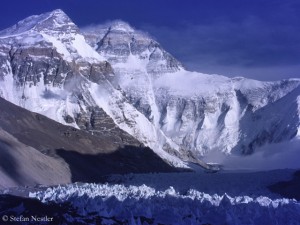

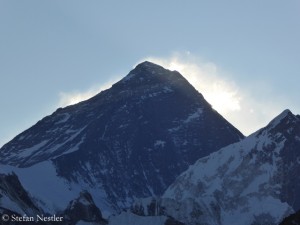
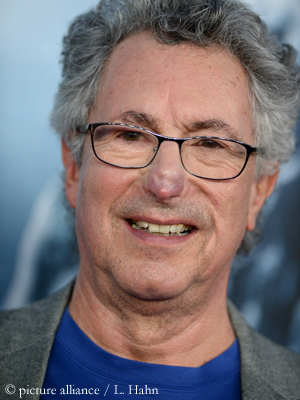
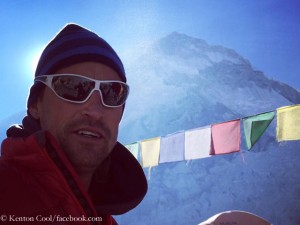
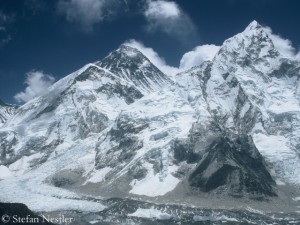
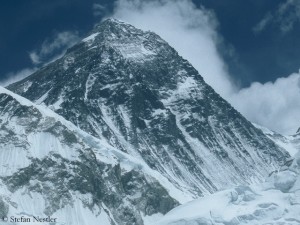
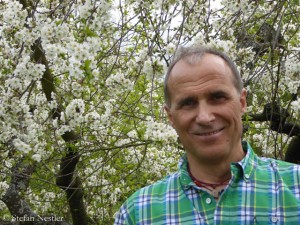
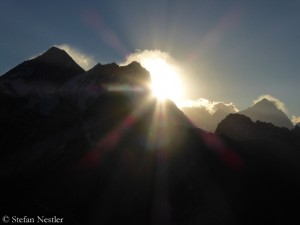
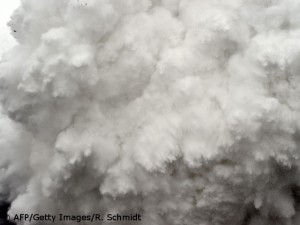
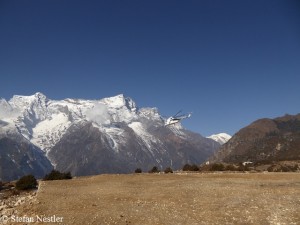
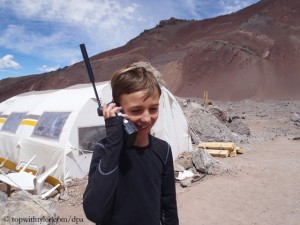
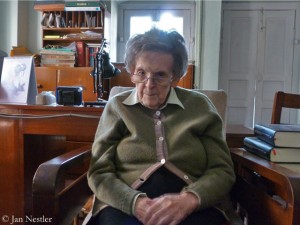
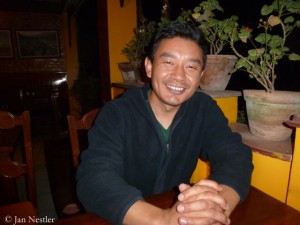
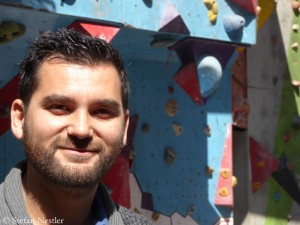





Feedback